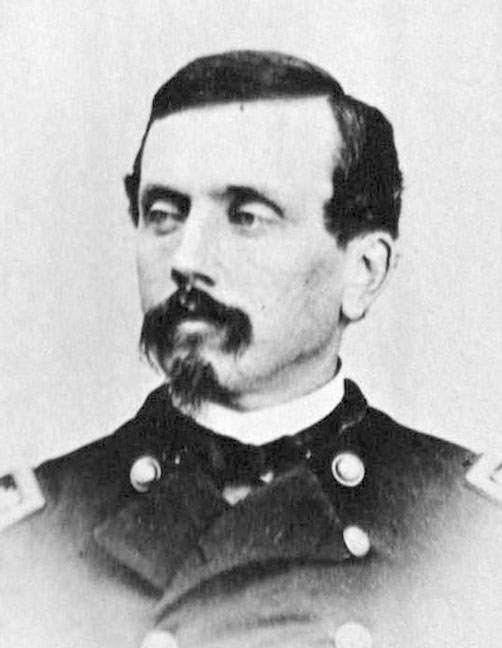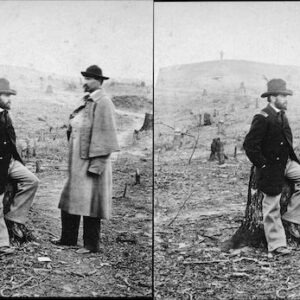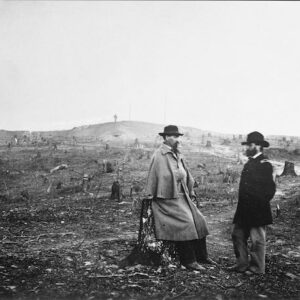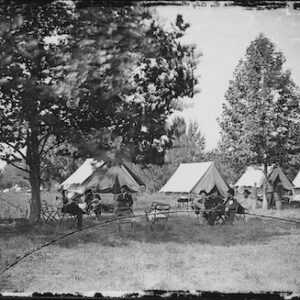Tag: Babcock (Orville E.)
 Wikipedia says: Orville Elias Babcock (December 25, 1835 – June 2, 1884) was an American engineer and general in the Union Army during the Civil War. An aide to General Ulysses S. Grant during and after the war, he was President Grant’s private secretary at the White House, Superintendent of Buildings and Grounds for Washington D.C., and a Florida-based federal inspector of lighthouses. Babcock continued to serve as lighthouse inspector under Grant’s successors Rutherford B. Hayes, James A. Garfield, and Chester A. Arthur.
Wikipedia says: Orville Elias Babcock (December 25, 1835 – June 2, 1884) was an American engineer and general in the Union Army during the Civil War. An aide to General Ulysses S. Grant during and after the war, he was President Grant’s private secretary at the White House, Superintendent of Buildings and Grounds for Washington D.C., and a Florida-based federal inspector of lighthouses. Babcock continued to serve as lighthouse inspector under Grant’s successors Rutherford B. Hayes, James A. Garfield, and Chester A. Arthur.
A native of Vermont, Babcock graduated third in his class at West Point in 1861, and served in the United States Army Corps of Engineers throughout the Civil War. As Assistant Engineer and aide-de-camp for district commander Nathaniel P. Banks, in 1862 Babcock worked on fortifications to aid in defending the nation’s capitol from Confederate attack. Babcock later served as aide-de-camp for Ulysses S. Grant and participated in the Overland Campaign. He was promoted to brevet brigadier general in 1865 and continued on Grant’s staff during Reconstruction. In 1867, Babcock warned Grant of a white supremacist insurgency that used Confederate symbolism to intimidate blacks in the South.
After Grant became President in 1869, Babcock was assigned Grant’s Secretary to the President of the United States—in modern terms, the chief of staff—and he served until his departure from the White House in 1876. Young and ambitious, critics considered Babcock the Iago of the Grant administration. He remained on the Army rolls during his service in the White House, which limited the ability of Congress to oversee or influence his activities. This circumstance became an issue when he was accused of crimes while in office. In addition to his position in the White House, Grant appointed Babcock Superintendent of Public Buildings and Grounds for Washington, DC. In 1869, Grant sent him on a mission to explore the possibility of annexing the island nation of Santo Domingo to the United States, but the Senate, led by Charles Sumner, rejected the proposal.
Babcock’s tenure under Grant was controversial. He was criminally indicted twice over corruption charges. Grant shielded Babcock from political attack out of a loyalty bond that stemmed primarily from their shared battle experiences during the Civil War. After Babcock was indicted as a member of the Whiskey Ring in 1875, Grant provided a written deposition on Babcock’s behalf—a first for a sitting president—which was admitted at Babcock’s 1876 trial, and resulted in his acquittal. Upon his return from St. Louis, Grant gave in to pressure from Secretary of State Hamilton Fish and forced Babcock to leave the White House. A second indictment, in 1876, over the Safe Burglary Conspiracy, ended in an acquittal, but further alienated Babcock from Republicans who favored government reform, while public opinion turned against him.
Despite dismissing him from the White House, Grant did not desert his wartime comrade; in February 1877, he appointed Babcock Inspector of Lighthouses for the Federal Lighthouse Board’s Fifth District, a low-profile post that did not attract undue public attention. In 1882, President Chester A. Arthur additionally appointed Babcock as Inspector of Lighthouses for the Sixth District. Babcock was the chief engineer overseeing plans for the construction of the Mosquito Inlet Lighthouse. He died on duty in 1884 when he drowned off Mosquito Inlet in Daytona Beach, Florida. Babcock’s historical reputation is mixed; his technical engineering expertise, efficiency, bravery in battle, and Union loyalty were offset by his involvement in corruption, deception, and scandal. Contrary to most of his contemporaries, Babcock also held no racial animosity, which played a part in his advocacy of Grant’s plan to annex Santo Domingo.
Showing all 3 resultsSorted by latest
-

Image ID: APNE
$4.99 -

Image ID: AQKL
$6.99 -

Image ID: ABEK
$4.99 – $5.99 This product has multiple variants. The options may be chosen on the product page